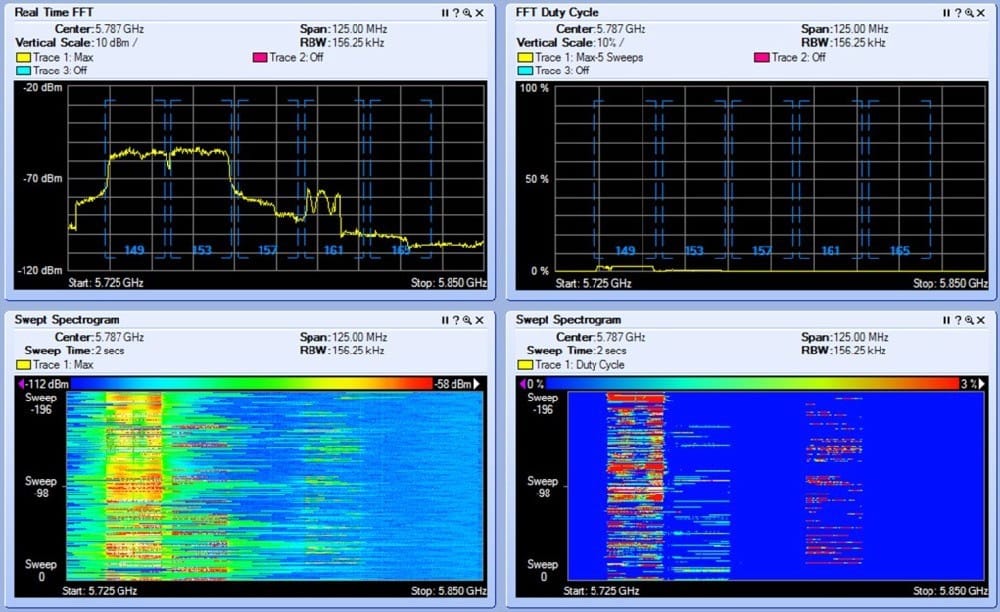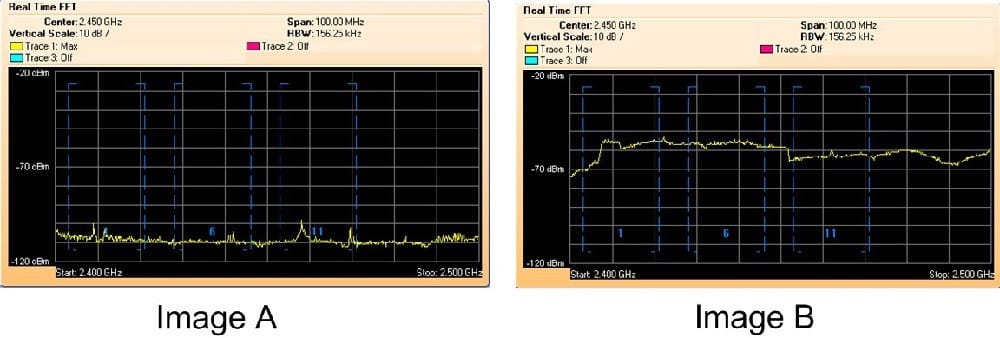Exam Details
Exam Code
:PW0-270Exam Name
:Certified Wireless Analysis ProfessionalCertification
:CWAP CertificationsVendor
:CWAPTotal Questions
:60 Q&AsLast Updated
:Jul 05, 2025
CWAP CWAP Certifications PW0-270 Questions & Answers
-
Question 21:
Many access points support IEEE 802.1Q VLAN tagging. When analyzing a WLAN system using IEEE 802.1Q tags, where can the VLAN tag number be seen?
A. In the Sequence Control field of the MSDU
B. In the PLCP header's Service field
C. In the Frame Control field of the MPDU header
D. In the Ethernet header on the wired port of the access point
E. In the Beacon Management frame's Capabilities fixed field
-
Question 22:
With what access category's parameters are WLAN multicast video frames transmitted when the EDCAF is in use by the transmitting station?
A. AC_VI
B. AC_VO
C. AC_BE
D. AC_BK
-
Question 23:
What is indicated to a QoS AP when a QoS STA sets U-APSD Flag bits to 1 in (Re) Association frames?
A. Which access categories are both trigger-enabled and delivery-enabled
B. Which user priorities require use of a TSPEC
C. Which access categories require admission control
D. Which user priorities are mapped to access categories
E. Which access categories are scheduled
-
Question 24:
Your wireless network troubleshooting kit includes an antenna with the following specifications:
Gain: 5 dBi Azimuth Beamwidth: 55 degrees Elevation Beamwidth: 50 degrees Frequency Range: 2.4 - 2.5 GHz and 4.9 - 5.9 GHz Polarization: Linear Impedance: 50 Ohms
For what aspect of network troubleshooting would this antenna be most useful?
A. Capturing BSS-wide CRC error and retry statistics in most indoor WLAN environments
B. Identifying problems with Fresnel zone clearance in long range (10+ miles / 16+ km) point-to-point links
C. Finding the physical location of an interfering transmitter to identify and remove the source
D. Increasing resolution bandwidth (RBW) on a spectrum analyzer to improve signature identification features
E. Matching transmit and receive capabilities for most client stations to reproduce client reception issues
-
Question 25:
Given: The exhibit shows a small network environment with dual-band APs.

What is true of the network shown in this spectrum analyzer trace?
A. There are at least three APs operating in this environment. They are operating on channels 149, 153, and 161.
B. There are two 40 MHz BSSs in this environment. One AP has some 40 MHz traffic while the other AP has no client traffic.
C. Only one AP in this network is configured to use the upper UNII band (UNII-3). All other APs are in lower 5 GHz channels.
D. Two 802.11a APs are near the spectrum analyzer and are heavily utilized on channels 149 and 153.
-
Question 26:
Given: ABC Company recorded the 2.4 GHz band with a spectrum analyzer prior to installing their ERP WLAN. Image-A is how the band appeared prior to the WLAN installation. Image-B is how the band appears now, and all channels on their WLAN have ceased to function.

What is the best explanation as to why their WLAN is no longer functioning properly?
A. A wideband RF power source is corrupting all IEEE 802.11 transmissions.
B. A new microwave oven was installed in the cafeteria.
C. A malfunctioning IEEE 802.11 OFDM radio card is transmitting continuously.
D. A manual site survey tool is actively testing the throughput of their WLAN.
E. A Terminal Doppler Weather Radar (TDWR) is causing a DFS response across the entire band.
-
Question 27:
Given: Your network consists of HT and ERP access points, and you are implementing VoWiFi with support for U-APSD.
When an ERP handset operating in WMM Power Save mode with a ReceiveDTIMs parameter of TRUE receives a Beacon containing a DTIM indicating queued broadcast traffic, what task is the handset required to perform?
A. The handset must send a PS-Poll frame to the access point for every broadcast frame it receives with the More Data bit set to one.
B. The handset must arbitrate for the medium and immediately issue an RTS directed to the access point with the NAV set to a value of 32,768.
C. The handset must broadcast a CTS-to-Self frame indicating the station's need to control the medium long enough to receive all of the broadcast frames.
D. The handset is to remain awake to receive the broadcast frame(s) following the Beacon that contains the DTIM.
-
Question 28:
WMM-PS trigger frames can be what type of IEEE 802.11 frames? (Choose 2)
A. QoS Null
B. Reassociation
C. QoS Data
D. CTS
E. QoS Action
F. PS-Poll
-
Question 29:
IEEE 802.11-2007 specifies two ERP protection mechanisms: RTS/CTS and CTS-to-Self. Which statement is true regarding these two protection mechanisms? (Choose 2)
A. RTS and CTS frames use Short Interframe Spaces (SIFS), and CTS-to-Self frames use PCF Interframe Spaces (PIFS).
B. Use of RTS/CTS requires more overhead than CTS-to-Self due to a higher number of frames transmitted onto the wireless medium.
C. RTS and CTS frames are relayed through the access point, whereas the CTS-to-Self frames are not.
D. A CTS-to-Self frame sent by a client station may reach fewer nodes than the RTS/CTS frame exchange.
E. By definition, all associated client stations in a BSS can hear RTS, CTS, and CTS-to-Self frames, so RTS/CTS and CTS-to-Self mechanisms have equal effectiveness.
F. Aside from the Subtype subfield of the Frame Control field, the generic MAC header format of RTS and CTS frames are identical.
-
Question 30:
Which statements are true regarding frame acknowledgement in an IEEE 802.11 WLAN? (Choose 3)
A. Following non-QoS Data frames with the More Fragments bit set to 1, the Duration/ID field of the ACK frame is set to a value equal to two SIFS plus the next Data fragment and its ACK.
B. A client station's Reassociation Request frames are only acknowledged with a Reassociation Response from the access point and not with an ACK frame.
C. Probe request acknowledgement (sending of a Probe Response frame) is configurable in the access point and is always linked to SSID broadcast configuration in Beacons.
D. In an EDCA BSS, encrypted Data frames are only acknowledged by client stations, never by access points.
E. Data frame fragments are acknowledged individually (with an ACK frame).
F. The RA field of ACK frames is always obtained from the Address 2 field in the corresponding frame being acknowledged.
Related Exams:
Tips on How to Prepare for the Exams
Nowadays, the certification exams become more and more important and required by more and more enterprises when applying for a job. But how to prepare for the exam effectively? How to prepare for the exam in a short time with less efforts? How to get a ideal result and how to find the most reliable resources? Here on Vcedump.com, you will find all the answers. Vcedump.com provide not only CWAP exam questions, answers and explanations but also complete assistance on your exam preparation and certification application. If you are confused on your PW0-270 exam preparations and CWAP certification application, do not hesitate to visit our Vcedump.com to find your solutions here.